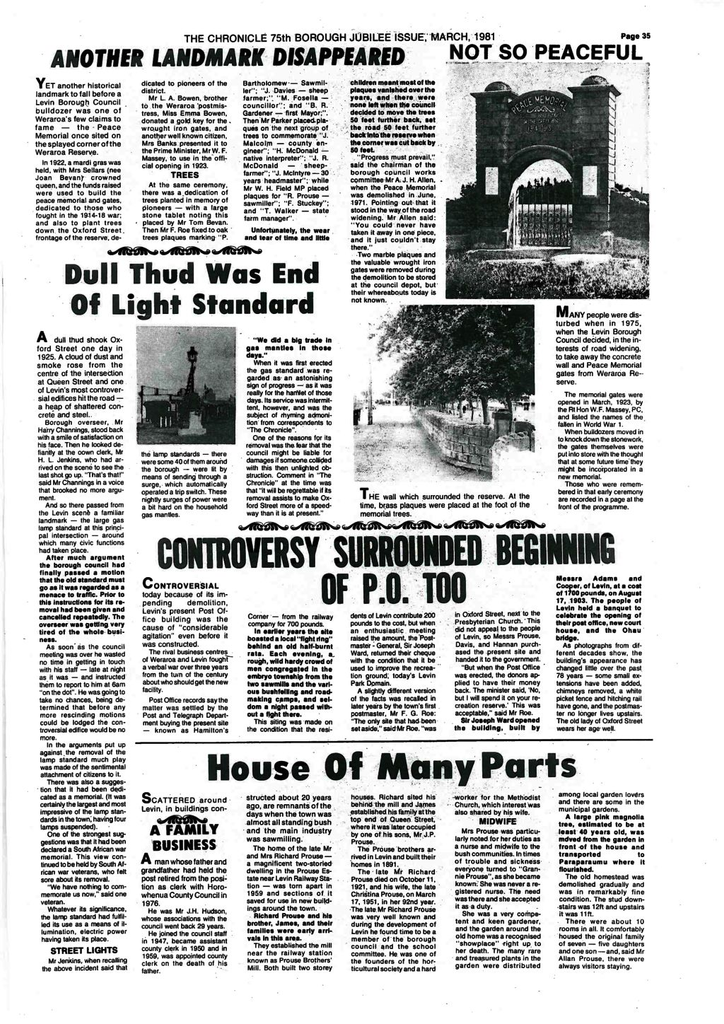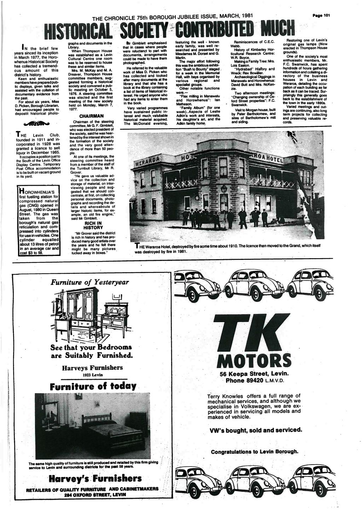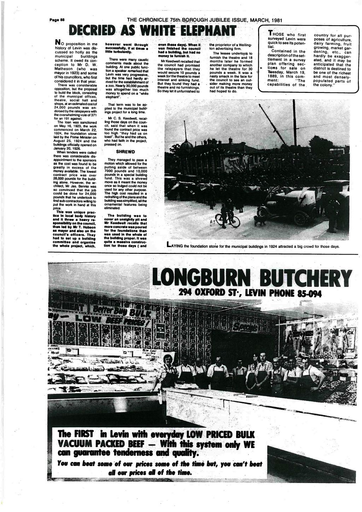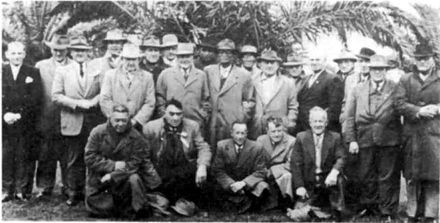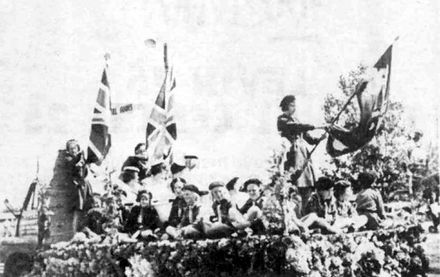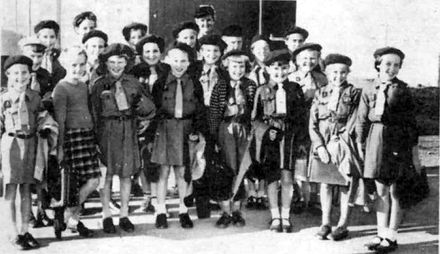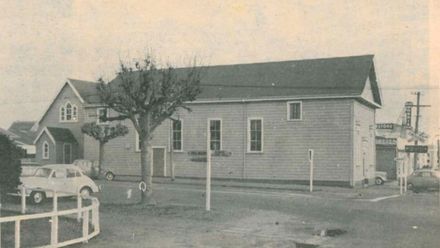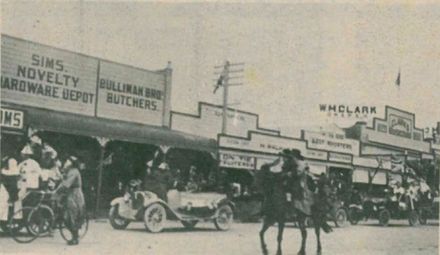Page 35 - Levin 75th Jubilee Supplement
- Description
Another landmark disappeared:
Yet another historical landmark to fall before a Levin Borough council bulldozer was one of Weraroa's few claims to fame-the Peace Memorial once sited on the splayed corner of the Weraroa Reserve.
Contains:
Levin Borough Council
Peace Memorial
Mr L. A. Bowen
Mr W. F. Massey
Mr A. J. H. AllenDull thud was end of light standard:
 A dull thud shook Oxford Street one day in 1925. A cloud of dust and smoke rose from the centre of the intersection at Queen Street and one of Levin's most controversial edifices hit the road-a heap of shattered concrete and steel.
A dull thud shook Oxford Street one day in 1925. A cloud of dust and smoke rose from the centre of the intersection at Queen Street and one of Levin's most controversial edifices hit the road-a heap of shattered concrete and steel.A dull thud shook Oxford Street one day in 1925. A cloud of dust and
smoke rose from the centre of the intersection at Queen Street and one of Levin's most controversial edifices hit the road - a heap of shattered concrete and steel.
Borough overseer, Mr Harry Channings, stood back with a smile of satisfaction on his face. Then he looked defiantly at the town clerk, Mr H. L. Jenkins, who had arrived on the scene to see the last shot go up. "That's that!" said Mr Channings in a voice that brooked no more argument.
And so there passed from the Levin scene a familiar landmark - the large gas lamp standard at this principal intersection - around which many civic functions had taken place.
After much argument the borough council had finally passed a motion that the old standard must go as it was regarded as a menace to traffic. Prior to this instructions for its removal had been given and cancelled repeatedly. The overseer was getting very tired of the whole business.
As soon as the council meeting was over he wasted no time in getting in touch with his staff - late at night as it was - and instructed them to report to him at 6am "on the dot". He was going to take no chances, being determined that before any more rescinding motions could be lodged the controversial edifice would be no more.
In the arguments put up against the removal of the lamp standard much play was made of the sentimental attachment of citizens to it.
There was also a suggestion that it had been dedicated as a memorial. (It was certainly the largest and most impressive of the lamp standards in the town, having four lamps suspended).
One of the strongest suggestions was that it had been declared a South African war memorial. This view continued to be held by South African war veterans, who felt sore about its removal.
"We have nothing to commemorate us now," said one veteran.
Whatever its significance, the lamp standard had fulfilled its use as a means of illumination, electric power having taken its place.
STREET LIGHTS
Mr Jenkins, when recalling the above incident said that the lamp standards - there were some 40 of them around the borough - were lit by means of sending through a surge, which automatically operated a trip switch. These nightly surges of power were a bit hard on the household gas mantles."We did a big trade in gas mantles in those days."
When it was first erected the gas standard was regarded as an astonishing sign of progress - as it was really for the hamlet of those days. Its service was intermittent, however, and was the subject of rhyming admonition from correspondents to "The Chronicle".
One of the reasons for its removal was the fear that the council might be liable for damages if someone collided with this then unlighted obstruction. Comment in "The Chronicle" at the time was that "it will be regrettable if its removal assists to make Oxford Street more of a speedway than it is at present."
Contains:
Mr Harry Channings
Mr H. L. JenkinsControversy surrounded beginning of P.O. too:
Controversial today because of it's impending demolition, Levin's present Post Office building was the cause of "considerable agitation" even before it was constructed.
Contains:
Levin Post Office
Sir Joseph Ward
Mr F. G. Roe
Messers Adams and Cooper of LevinHouse of many parts:
 Scattered around Levin, in buildings constructed about 20 years ago, are remnants of the days when the town was almost all standing bush and the main industry was sawmilling.
Scattered around Levin, in buildings constructed about 20 years ago, are remnants of the days when the town was almost all standing bush and the main industry was sawmilling.This photo (at left) shows:
The home of Richard Prouse, (sawmiller), later called “Weraroa House”, at Weraroa. The two storied wooden house, with an iron roof, two brick chimneys, sash windows, a bay window on the lower floor at the front of the house, a balcony on the upper floor above a verandah on the lower floor, was built in 1891 or 1892. The house was situated directly to the east of the Levin Railway Station at Weraroa.Contains:
Mr and Mrs Richard Prouse
Prouse Brothers Mill
Mr J. P. Prouse
Identification
- Date
- March 1981
Taxonomy
- Community Tags


